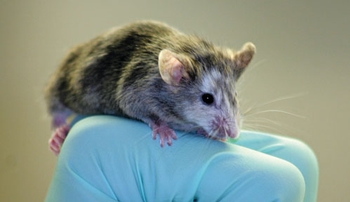Only 1 percent of human genes lack counterparts in mice, which is what makes the mouse such a great model to study human diseases. While 99 percent of genes in humans have counterparts in the mouse, 80 percent have identical, one-to-one equivalents. The similarities are what provide researchers fertile ground in which to create medical breakthroughs.
 |
| UNMC has developed mice with the equivalent of a human immune system that can now “catch” HIV to help with research of the disease. |
Tens of thousands of human and veterinary medicines in the market today are the results of research using laboratory animals, particularly the mouse. Since 1 percent of human genes have no mouse counterparts, some human diseases cannot be tested in them, unless the mouse is specially designed to carry human blood and cells. “Mice are always teaching us,” said Larisa Poluektova, M.D., Ph.D., associate professor of pharmacology and experimental neuroscience, who adapted a specially-designed mouse model for HIV dementia research. Because mice cannot acquire HIV, UNMC has developed mice with the equivalent of a human immune system that can now “catch” HIV. Such a mouse model enables advanced tests on HIV and its treatment. Read more about this development in the latest edition of UNMC Discover.